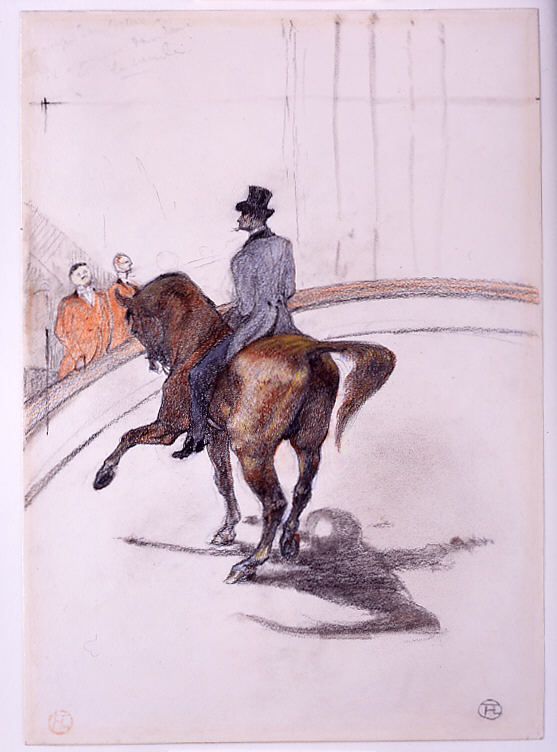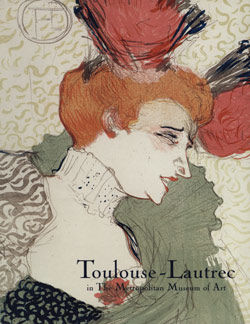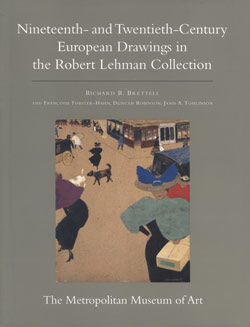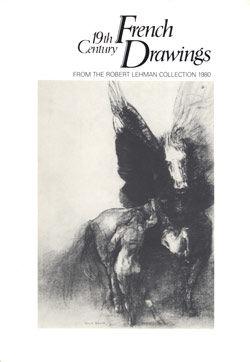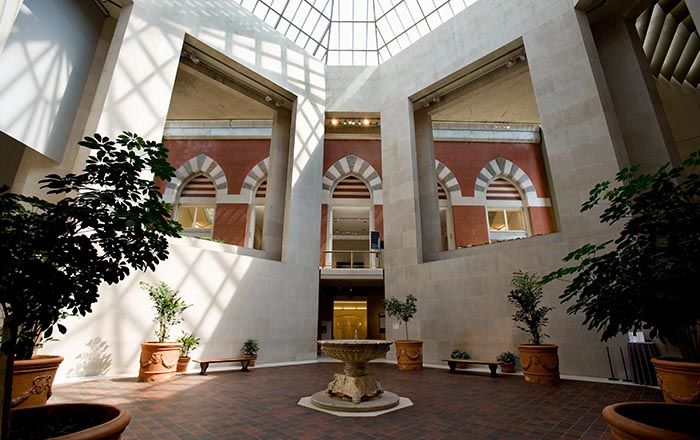At the Circus: The Spanish Walk (Au Cirque: Le Pas espagnol)
Henri de Toulouse-Lautrec French
Not on view
The grand master of urban entertainments, Henri de Toulouse-Lautrec made many paintings and drawings on the circus theme in the late 1880s and 1890s, just as his popularity as a commercial artist soared. Fin-de-siècle Paris hosted an assortment of professional circuses, and Lautrec frequented them all. He was personally drawn to circus performers-those colorful equestrians, animal trainers, clowns and acrobats on society's "fringes." It was while undergoing treatment for alcoholism at a sanitarium on the outskirts of Paris in 1899 that Lautrec produced an ambitious group of crayon/chalk drawings of circus figures. These imaginative sketches were drawn entirely from memory, without recourse to preliminary studies. The Lehman horse and rider perform the "pas espagnol", the ambling gait formalized by the Spanish Riding School of Vienna. It was thanks to these circus drawings that Lautrec earned his release from the sanitarium-their impressive handling convinced doctors of his improving health. As Lautrec left the clinic, he is said to have remarked, "I've bought my release with my drawings."
Due to rights restrictions, this image cannot be enlarged, viewed at full screen, or downloaded.
This artwork is meant to be viewed from right to left. Scroll left to view more.



